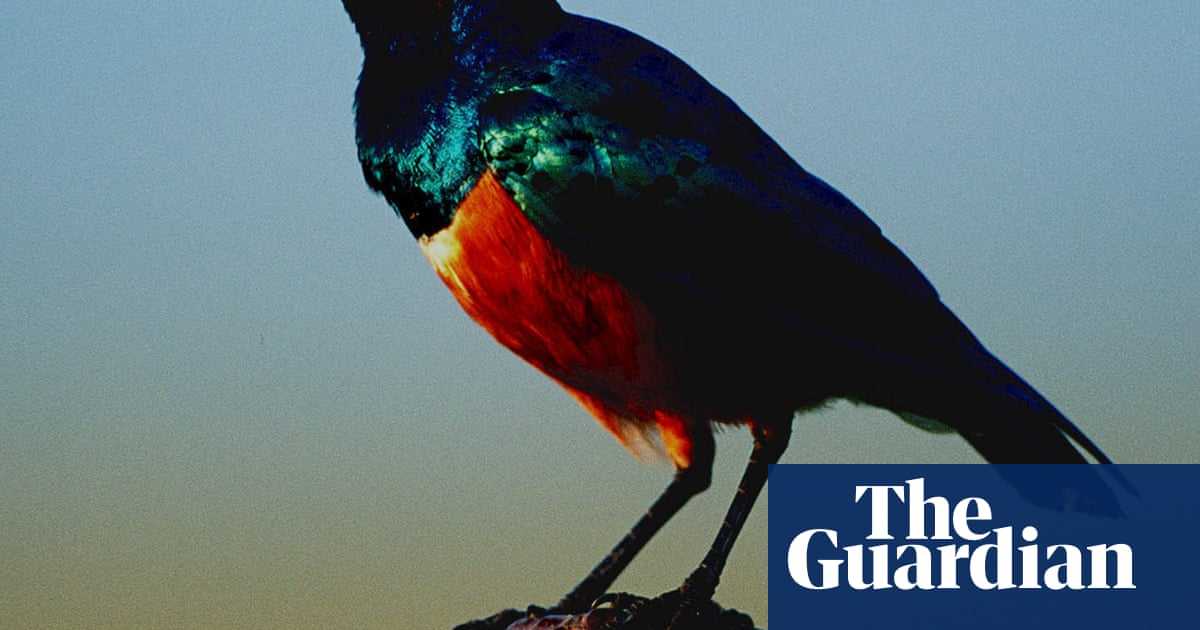Birds of a feather flock together, so the saying goes. But scientists studying the behaviour of starlings have found their ability to give and take makes their relationships closer to human friendships than previously thought.
About 10% of bird species and 5% of mammal species breed “cooperatively”, meaning some individuals refrain from breeding to help others care for their offspring. Some species even help those they are unrelated to.
Now researchers studying superb starlings have found the support cuts both ways, with birds that received help in feeding or guarding their chicks returning the favour when the “helper” bird has offspring of its own.
Prof Dustin Rubenstein, a co-author of the study from the University of Colombia, said such behaviour was probably necessary for superb starlings as they live in a harsh environment where drought is common and food is limited.
“Two birds probably can’t feed their offspring on their own, so they need these helpers to help them,” he said, adding that as each breeding pair produces few offspring, birds must be recruited from outside the family group to help the young survive.
“What happens is the non-relatives come into the group, and they breed pretty quickly, usually in the first year, maybe the second year, and then they take some time off and some of the other birds breed – and we never understood why,” said Rubenstein. “But they’re forming these pairwise reciprocal relationships, in the sense that I might help you this year, and then you’ll help me in the future.”
The results chime with previous work from Rubenstein and colleagues that found superb starlings living in larger groups have a greater chance of survival and of producing offspring, with the new work suggesting the give-and-take approach helps to stabilise these groups.
Writing in the journal Nature, Rubenstein and colleagues report how they studied superb starlings at 410 nests in Kenya spanning nine social groups, recording data over a 20-year period from 2002 that covered more than 40 breeding seasons. The team also collected DNA from 1,175 birds to explore their relationships to each other.
The results reveal that rather than helping birds at random, starlings preferentially helped breeding birds that were related to them, particularly if they were born in the same nest. However, they also helped unrelated breeding birds, even when there were opportunities to help relatives.
The team found helpers tended to aid specific breeding birds. Crucially, these pairs of breeders and helpers often switched roles from one breeding season to the next – particularly if they were immigrants to the group.
“You can think of them as friendships, in the sense that they’re not relatives,” said Rubenstein.
However, Rubenstein said questions remained. “Why don’t they just get the help and then not reciprocate the help in the future?” he said, adding the team was collecting further data to explore the conundrum.
The team said that while studies often focused on how helping a family member promoted the chance of the helpers’ genes being passed due to shared ancestry, the new work showed helping– including between non-relatives – could bring other benefits.
Dr Julia Schroeder, an expert in behavioural ecology at Imperial College London who was not involved in the work, said the research supported the idea that birds could recognise each other individually, and confirmed previous suspicions that they engaged in this give-and-take behaviour.
“It helps us better understand altruism and the evolution of altruism, because it’s still a bit of a mystery,” she said.
